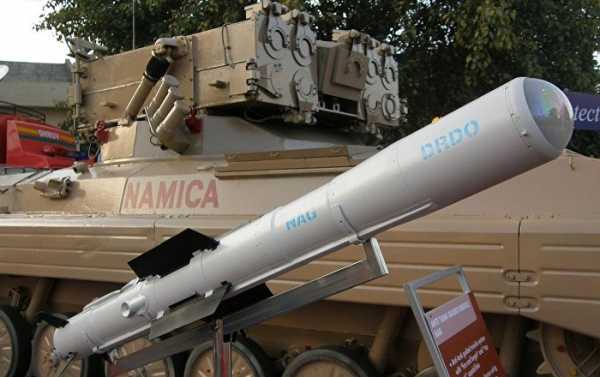
The Helicopter Launched Nag (HELINA) missile had a problem locking onto the heat signature of a tank target in very hot conditions as the target’s heat signature merged into its surroundings. The problem has been solved with the help of an upgraded 640x512px focal plane array infrared imaging seeker.
New Delhi (Sputnik): Indian defense scientists have finally solved a problem that had been delaying the induction of the locally-developed Nag missile, dubbed as one of the most advanced anti-tank weapons in the world, into the country’s armed forces.
On Sunday, the Indian Defense Ministry said that the HELINA (helicopter launched Nag) missile was successfully flight tested from an army helicopter in Pokhran. The weapon system was tested for its full range of seven kilometers.
“The missile is guided by an Infrared Imaging Seeker (IIR) operating in the Lock on Before Launch mode. It is one of the most advanced Anti-Tank Weapons in the world,” a Defense Ministry statement reads.
The country-made IIR provides day and night operational capabilities against low silhouette tanks, both static and fast moving. This was the first trial of the HELINA using an upgraded 640x512px focal plane array IIR that helped directly hit the target’s heat signature. Earlier, it had a problem locking onto the heat signature of a tank target in very hot conditions as the target’s heat signature merged into its surroundings.
The anti-tank guided missile can be launched from both land and air-based platforms. The strike range of the land variant and air version of the missile is up to 4 km and up to 7 km, respectively.
The DRDO has been working on the Nag missile since 2009, spending approximately $47 million on its development.
Sourse: sputniknews.com






